Comparisons 17 min read
Best used hybrid cars
When you reflect on the turn of the New Millennium, while none of the horror stories relating to various system collapses ever occurred, for the motor industry, changes were very much in the air and it is true to state that those changes continue to hit home, as Iain Robertson contemplates the on-going impact of hybrid engine technology, which was brand-new in the UK in 2000
Jump to:
Honda Insight Lexus CT200h Honda Insight (Mark Two) Toyota Prius Mark Two Honda CR-Z VerdictHybrid engineering is a fascinating subject. In automotive terms, a hybrid is a cooperative clash of a conventional (mostly uprated and optimised) internal combustion engine, with a supportive electric motor, allied to a compact battery storage facility. Dependent on installation, both power units will work either in series, or parallel. With the former, the stored energy is used to boost potency, while the latter can provide a small amount of solely EV power, but it is limited. Their importance is underscored by their self-charging capabilities, a situation only advanced more recently with the arrival of plug-in technology. As an easier route to eco-motoring, hybrids can be engaging.
As to which carmaker was the first to our market with its hybrid developments is open to interpretation. While I can recall driving a UK one-off (Japanese imported Prius Mark One, complete with its home market specification controls, suspension and instrumentation) that Toyota brought to a late-1999 industry test session, Honda actually got its fully-homologated Insight coupe into the UK public domain by 2001. In fact, Honda allowed me to operate an Insight for 12 months at that time and, to be frank, I fell in love with it! Truth is, they were both conceived around the same time.
Both cars used Nickel Metal hydride (NiMh) battery technology, declaring it the least volatile solution for general consumption, even though the Lithium-ion type would soon take over. Both Honda and Toyota placed a minimum of eight years warranty on the battery packs largely because, as they both admitted freely at the time of their product launches, they had no idea as to how durable they would be after continual charging and recharging of their systems. Only recently, I was able to check personally a 16-year-old Insight that had covered in excess of 130,000 miles but was still running perfectly reliably on its original hardware.
As with most new technology, especially if it possesses confusingly ‘green’ (or as most of them seem to prefer these days, ‘blue’) credentials, public sector transport fleets were early targets, working on the basis that, if government were to provide incentives to cleaner air vehicles, then government and its departments should commit to being among the first users. Interestingly, an early tranche of ‘halo-wearers’ took up the challenge and, while the numbers were thin on the ground, Insights and Priuses were notable for their presence. Those early hybrids were exempt from road tax (sub 100g/km CO2) but not congestion zone charges.
The Discover EV Top 5 hybrids for less than £10,000 is as follows:
Honda Insight
History
Available in the UK from early-2001 to 2006, the Japanese domestic market enjoyed two years’ worth of hybrid experiences with Insight before we did. The first generation was a futuristic looking two-seater, two-door coupe with hatchback access to a compact boot. A second-generation model was thoroughly revamped as a five-door hatchback (see below), while a third generation has been revealed recently, as a four-door version of the Honda Civic, powered by the same (albeit upgraded) Integrated Motor Assist (IMA) technology as the first generation.
Tech and design
Although the first-gen Insight bore a familial relationship to the Honda CRX coupe model of five years prior, its body was radically different in construction terms, featuring the extensive use of aluminium alloy, magnesium alloy and lightweight flow-formed plastic body panels. Aerodynamically optimised courtesy of a flat underfloor and air-flowed wheel arches (rear arches were enclosed) the Insight boasted a drag coefficient of around 0.25, which was rated as the lowest of any production car at the time. Powered by a surprisingly strong, 1.0-litre, 67bhp, three-cylinder, normally-aspirated petrol engine, to which was attached the IMA electric motor (which gave it an additional 13bhp), it drove through a five-speed manual gearbox and tipped the scales at a low 830kgs.
Drive
Featuring particularly light but direct, electric power steering, which lacked in initial feel, becoming familiar with the Insight’s handling envelope could be slightly unnerving to begin with. Yet, tolerate its firm suspension, a 4.3 inches narrower rear track than the front (like a classic Citroen DS19) and its skinny 155/70 section high-pressure, low rolling resistance tyres and its dynamics soon made sense. Planning ahead was an essential consideration, in order to enjoy smooth and progressive road manners. Its maximum indicated speed was an amazing 123mph, with 0-60mph taking around 11.4 seconds.
Charging
The ancillary 144v battery pack was below the high boot floor, flanking a deep bin for storage of personal items. The 8.8g fuel tank was located just behind the front seats. Featuring a brake energy recovery system, which could be tailored to provide a range of gentle to strong recharging of the pack, meant that the car’s brakes were rarely called into use, until a full stop was required. Later versions offered an electronically-managed CVT (constantly variable) transmission. Fuel economy was rated at 73mpg, although I attained 88.8mpg on longer trips.
Summary
While even early adopters were concerned about the new technology applied to Honda’s ‘wunderkind’, preconceptions were confounded by the sheer reliability of the Insight. It suffered freefall residual values in the early years, one-year old examples retaining less than a third of their 2001 initial invoice values. Although it could feel flimsy, the car was actually constructed very sturdily. The first-gen and potentially rot-free Insight has the potential to be a modern classic collectible, which makes snaffling-up the right examples very good sense. It was believed that the actual on-sale price should have been almost £34,000 but Honda swallowed the immense development costs on this first-gen model.
Specifications:
- Price when new: £17,995
- Price used: £550 - £2500 (trim level and condition dependent)
- Engine and transmission: Hybrid petrol-electric, five-speed manual, front-wheel drive
- Power: 80bhp (combined)
- Torque: 94lb-ft (36lb-ft provided by the electric motor)
- Top speed: 123mph
- 0-60mph: 11.4 seconds
- Driving range: 657 miles (NEDC)
Lexus CT200h
History
Following the early entrants to the hybrid scene in the UK by a decade (2011), the junior-league luxury Lexus CT200h was little more than a Toyota Prius in a marginally prettier dance frock. While the uptake rate was fair, the car was received critically but was not all good. It lived up to its Lexus badging with a very comfortable interior, as long as your rear passengers did not resent the cramped and dark quarters. However, Lexus (and Toyota, for that matter), could boast of model reliability and averagely low running costs, which are factors admired greatly by owners.
Tech and design
Much of the motoring media criticism surrounded the relatively low-rent interior décor. The truth was, we expected better of a Lexus branded motorcar. Of course, it was launched at a critical moment, with the advent of the London Congestion Charge Zone and the City’s ULEV demands. The initial model emitted CO2 at a rate of 94g/km and was available in SE, SE-L and SE-L Premier trim grades. Partly in response to consumer demands an even higher-grade Advance and an entry-level S boasting 87g/km CO2 arrived a year later. A series of updates in 2014 raised the bar a little by improving the handling and interior accoutrements. Another facelift in 2017 continued the much-desired trim and safety upgrades.
Drive
Numb would be an appropriate descriptive term for the early CT200h’s handling envelope. The steering lacked feel. The suspension felt wooden. The brakes suffered from ‘dead pedal’. It gripped well enough but it felt uninspiring. Although the government claim was around 68.9mpg, even a concerted attempt to maximise fuel economy was rewarded rudely by an average of 52.0mpg. Yet, those private buyers investing in the car insisted that it was far better than they had anticipated… so, go figure.
Charging
Entirely self-charging, which is the whole point with hybrids, the 1.8-litre optimised petrol engine, combined with an electric motor, drove through a performance and pleasure-stunting CVT (constantly variable) transmission. It was a direct lift from the Toyota Prius, into a slightly heavier car (1420kgs). The below-rear-seats battery pack robbed valuable headroom, although it did balance the platform, which helped to neutralise its handling envelope. The power unit developed a modest 134bhp and three selectable power modes were provided: Eco, Normal and Sport. In the latter setting, a CT200h can crack the 0-60mph sprint in a moderate 10 seconds, topping out at around 112mph.
Summary
With a projected EV range of around one mile, as long as speed was maintained at less than 30mph and the battery pack was fully-charged, CT200h’s role as a truly clean vehicle was compromised. Yet, it was capable enough as a steady speed, suburban cruiser, although its idiosyncrasies were revealed at higher speeds, when the petrol engine would settle invariably at high-revs, doing typical battle with the CVT. The boot capacity was a modest 375 litres, although folding the rear seats forwards opened it up to around a more practical 965 litres. Strong build quality helped with the car’s longevity.
Specifications:
- Price when new: £23,485 - £30,635
- Price used: £6995
- Engine and transmission: Hybrid petrol-electric, single-speed CVT, front-wheel drive
- Power: 134bhp (combined)
- Torque: 105lb-ft
- Top speed: 112mph
- 0-60mph: 10 seconds
- Driving range: 732 miles (NEDC)
Honda Insight (Mark Two)
History
While the impact of the original Insight had frittered out by the late-noughties, Honda persevered with a completely different and notional ‘Mark Two’ version. Featuring a very conventional looking, five-door hatchback body-style, its hybrid platform would also be used later for the sporty CR-Z model. Honda’s intention was to make hybrid technology more widely available and less curious than the first generation. A more conventional stance ensured that most aspects of the car followed a more broadly acceptable dynamic and style pattern. It was sold in the UK from 2010 to 2014.
Tech and design
Traditional aerodynamics (wedge design; flat bottom) were employed but the second-generation Insight had clearer familial links to other Honda models, as the company sought to normalise its hybrid offering. Its design similarity to the larger fuel cell FCX Clarity model is obvious but it also bears a similarity to the Toyota Prius Mk 2, which raised eyebrows. The 1.3-litre, four-cylinder petrol engine featured an electric motor fitted directly to the crankshaft between the engine and the vastly improved CVT ‘gearless’ transmission. As part of the IMA technology, the engine was designed to minimise frictional losses, which resulted in a highly efficient 98bhp and 123lb-ft of torque (with the electric motor contributing 13bhp/58lb-ft).
Drive
With the IMA system factoring-in a battery charge under acceleration, aided by brake energy recovery on the over-run, the motor also provides a fast-spin restart for the ‘-stop:go facility. The car’s conventional 12v battery could be used in adverse conditions as a back-up. The CVT featured six artificial step-off ratios (7 ‘gears’), which served to normalise the transmission’s behaviour. The Sanyo-built, 84-cell battery pack had a rating 30 per cent more potent than the previous generation. Driven with gusto, an Insight Mk2 could clock 0-60mph in around 10 seconds, with a top speed of 108mph. Its Official Combined fuel return was given as 64.2mpg. Driven normally, the instrument read-outs glow green; driven more aggressively, they glow blue-green; while full-throttle applications induce a blue glow.
Charging
Entirely self-contained, the punchy, small capacity Honda drivetrain could build-up charge even under steady speed cruising and its condition could be checked readily on the digital dashboard display. All aspects of the battery management system, its on/off-power scavenging, the modules and cooling system are entirely self-contained within the IMA battery pack. No complex repair, or reliability issues have ever been reported.
Summary
An in-built Eco-guide helped drivers to adjust their driving styles to add leaves to a green graphic plant stem. The more leaves added, the closer the driver would come to scoring a trophy graphic. It showed that Honda possessed both a sense of fun and a desire to make hybrid operation a worthy exercise. Using suspension derived from the Jazz model, the Insight handled very well. It was tax-friendly, even though rated at 101g/km CO2.
Specifications:
- Price when new: £16,995 - £23,595
- Price used: £3460 - £9995 (trim level and condition dependent)
- Engine and transmission: Hybrid petrol-electric, seven-speed CVT, front-wheel drive
- Power: 98bhp
- Torque: 123lb-ft
- Top speed: 108mph
- 0-60mph: 10 seconds
- Driving range: 640 miles (NEDC)
Toyota Prius Mark Two
History
If the first version of Prius was outlandish in appearance, the second version was significantly more conventional, as Toyota set about popularising hybrid technology in a way that its main rival Honda seemingly could not match. Toyota can argue that it was the first hybrid to be sold in volume in its domestic market in 1997. The first generation was sold up to 2003, when the Mark Two variant was revealed. By 2008, one million Prius models had found homes worldwide. The two million mark was passed in 2010 and over four million was reached in early 2017. To say that it has been a commercial success is an understatement.
Tech and design
Although positioned between Corolla and Camry at launch, the Prius was actually a very well-proportioned family hatchback, offering superb occupant space utilisation front and rear and a decently proportioned boot beneath its rear hatchback; the available space being augmented by folding down the rear seat uprights. A distinctive uni-box outline, terminating in a Kamm-tail, promoted its practical aerodynamic shape (0.26Cd), which was further refined by a lightly scalloped roof line that promoted smoother airflow to the rear of the car. Careful use of lightweight materials helped to reduce the weight penalty inferred by carrying a battery pack. Three specifications were available: T3, T4 and T-Spirit.
Drive
Apart from its snickety and stubby gear shift lever that operates on the epicyclic automatic transmission, the second-generation Prius was surprisingly conventional. Its top of centre stack touchscreen could display multiple information, from sat-nav to stereo settings and also the charging situation for the on-board NiMH battery pack. Powered by a 76bhp 1.5-litre VVTi optimised petrol engine, in conjunction with a 67bhp electric motor, its performance was brisk but not as thrilling as 143bhp (total) ought to be. Its electric power steering suffered from a lack of feel, feedback and precision. Yet, the car’s ride quality was excellent and body roll well controlled.
Charging
Once more, the car’s greatest strength as a hybrid is its self-charging autonomy. The below-rear-floor NiMH battery pack was compact and boosted the performance of the car, without major penalties at fuel pumps. Its parallel powertrain format enabled around one mile of EV use, from which the shift to the internal combustion engine was virtually imperceptible. Brake energy recovery recharged the battery pack, although there was also a small amount of charge recovered during the over run.
Summary
Boasting a larger boot capacity than its rivals made the Prius a practical proposition both as a family and business use vehicle. Toyota was already starting to reduce the list prices of its ‘everyman’ hybrid, as it could see a future profit margin appearing, as a result of strong sales. Interestingly, the Prius won the annual Car of the Year award in 2005.
Specifications:
- Price when new: £18,355 - £21,195
- Price used: £1505 - £4980 (trim level and condition dependent)
- Engine and transmission: Hybrid petrol-electric, single-speed auto, front-wheel drive
- Power: 143bhp
- Torque: 105lb-ft
- Top speed: 105mph
- 0-60mph: 10.6 seconds
- Driving range: 643 miles (NEDC)
Honda CR-Z
History
As mentioned above, the pretty and zesty CR-Z was based on the Insight (Mk2) platform, complete with IMA electric motor and battery technology. Honda’s brief was to create a more engagingly sporty compact hatchback, by investing in a market niche that Toyota was electing to ignore. It was introduced in 2010, although imports ceased in 2013, which makes the window for obtaining an example quite narrow. Yet, it was also a sports car without operational guilt, thanks to its nifty hybrid powertrain.
Tech and design
Following the logic of the original Insight model, the CR-Z was equipped with a standard six-speed manual gearbox (although a CVT was an option). Powered by a 1.5-litre petrol engine in combination with the IMA electric drive system, its combined power output was a satisfying 121bhp. An intriguing redevelopment of the car by Honda’s tuning arm, Mugen, resulted in a 200bhp supercharged variant, although Mugen also developed a number of bodywork and trim enhancements for the CR-Z. Its coupe styling provided a pair of vestigial rear seats (deleted for the US market). Its interior was fairly conventional, blending analogue with digital instrumentation and graphics on the centre-screen that showed the IMA power flow. Unlike the original Insight, the body is pressed from steel.
Drive
CR-Z was a brilliant car to drive. Its electric power steering provided direct and surgically-sharp responses and its handling matched its sporting intentions, displaying virtually zero body roll and minimal dive under braking. Its ride quality was a little nuggety but fine build quality ensured that nothing rattled annoyingly and grip levels were at ‘superglue’ standard. The IMA system provided a 14bhp boost to an engine rated at 112bhp. As a result, CR-Z could sprint from 0-60mph in a moderate 9.5 seconds, before running out of steam at 124mph.
Charging
As with all hybrids, the self-contained, self-charging facility provided ultimate ownership convenience. All the driver was required to do was refuel the car. The IMA provided a valuable boost, when overtaking, although its low-speed pull was also strong. An ECO mode (designated by a green-leaf button) could help the driver to attain around 10 per cent better fuel return but dulled throttle response significantly. It was difficult to differentiate between Normal and Sport modes but the CR-Z could return around 56.4mpg in daily motoring.
Summary
Honda succeeded in providing a youthful and satisfyingly sporty edge to its CR-Z. Its stop:start technology worked slightly differently to other systems, in that selecting a gear and releasing the clutch restarted the engine (all others demand that the clutch pedal be depressed for a restart). It possessed a very engaging handling envelope. While the main instrument ‘halo’ glowed green, it would progress through blue to red, the harder the car was driven. There was also oodles of space in its boot and behind the comfortable and supportive front seats. Six trim levels were available: S, Sport, Sport-T, GT, GT Nav and GT-T.
Specifications:
- Price when new: £18,035 - £24,670
- Price used: £3270 - £5840 (trim level and condition dependent)
- Engine and transmission: Hybrid petrol-electric, six-speed manual, front-wheel drive
- Power: 122bhp
- Torque: 128lb-ft
- Top speed: 124mph
- 0-60mph: 9.5 seconds
- Driving range: 492 miles (NEDC)
Verdict
While not a packed sector of the used car market, there are other hybrids available at marginally greater cost, with early versions of the Toyota Yaris, Auris and various Lexus models, including RX400h, GS450h and LS600h. Subsequently, over 50 different makes and hybrid models are sold in the UK today. The technology no longer instils fear within either buyers, or (more importantly) the motor trade, the initial reactions from which resulted in freefall residual values that scared other manufacturers at the start of the New Millennium.
Hybrid mobility is a great first step for anybody looking to enter the ‘clean and green’ arena, even though the word ‘relatively’ ought to be factored in. Most owners report that they can attain an improvement of up to 30 per cent on their fuel economy, when compared with an equivalent petrol engined car. There have been a few diesel-electric hybrids but they are rare and unlikely to appear again in a market where diesel fuel has been demonised.
Some hybrids (prior to the plug-in class of advancement) have offered a ‘zero emissions’ operational setting, which works in conjunction with the vehicle’s stop:start feature. Longer distance driving is not the hybrid’s forte, although NOx and particulates will be lower than an equivalent ICE.
The future for hybrids has been broadened by Mercedes-Benz, Porsche, Hyundai-Kia and Volkswagen having joined the instigators at Toyota and Honda. However, the ‘plug-in’ type of technology will replace conventional hybrids, due to larger battery packs and longer (up to 35 miles) EV ranges. However, as a means of eradicating the ‘range anxiety’ inherent to EVs, hybrid technology still has a valuable role to play for both private and business users. It must be said a mindset change is going to be essential to some current plug-in operators, whom have never/seldom plugged-in their cars, relying instead on the in-built hybrid technology that will never leave them high and dry.
Hybrids are a means to achieving greater fuel efficiency and flexibility.

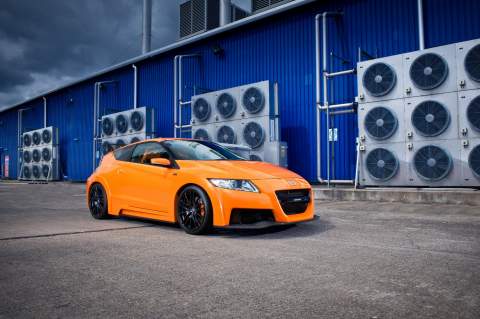
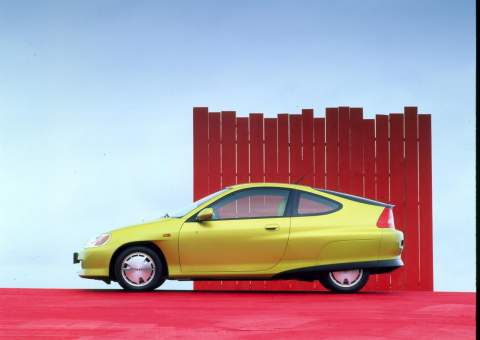 Avant-garde styling polarises choice
Avant-garde styling polarises choice 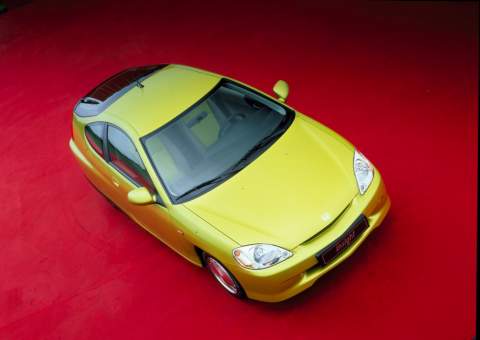 Low drag efficiency was the key
Low drag efficiency was the key 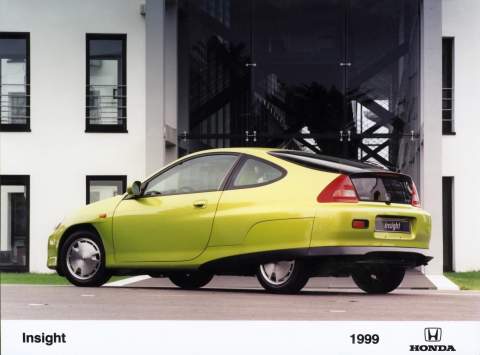 Lightweight efficiency was critical
Lightweight efficiency was critical 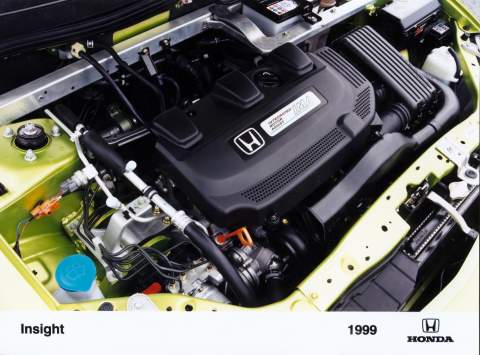 Sub 1.0-litre + electricity = Fun
Sub 1.0-litre + electricity = Fun 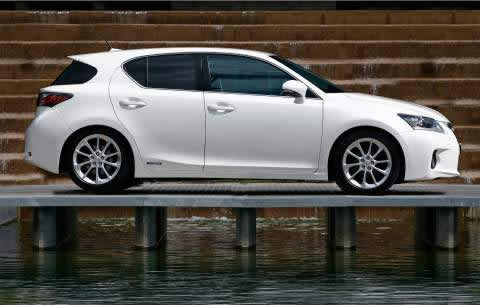 Attractive with some awkward angles
Attractive with some awkward angles 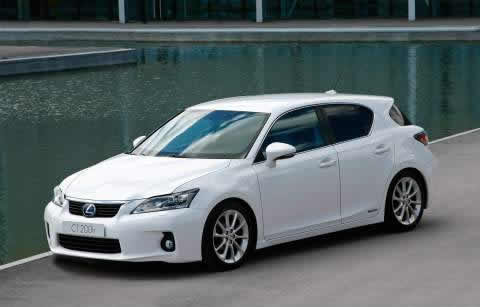 Lexus badge makes vital impression
Lexus badge makes vital impression 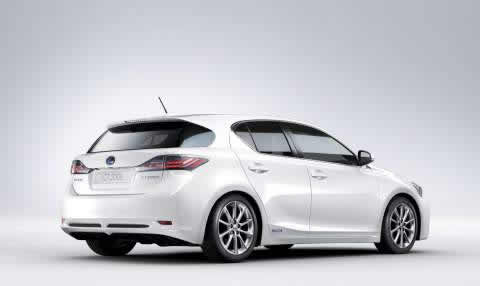 Rear-end detailing was uninspiring
Rear-end detailing was uninspiring 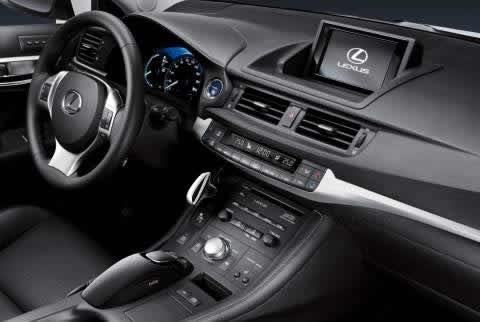 Interior achieved mixed reviews
Interior achieved mixed reviews 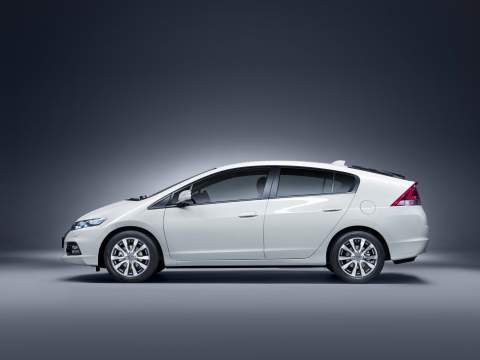 Strong family look to profile
Strong family look to profile 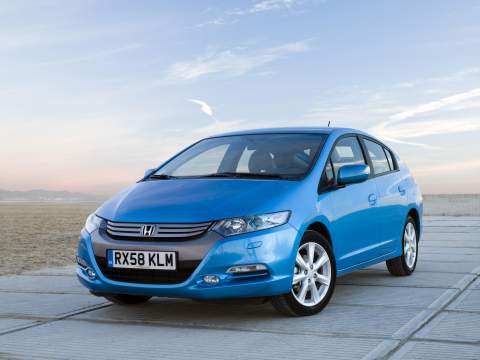 Conventionality is clear
Conventionality is clear 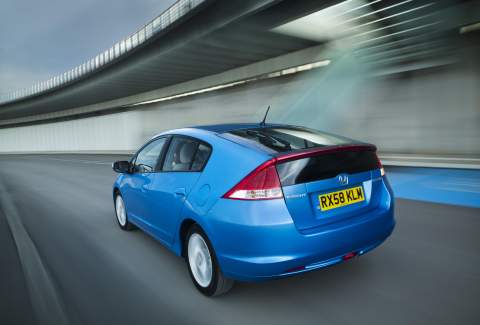 Clean and uncluttered design
Clean and uncluttered design 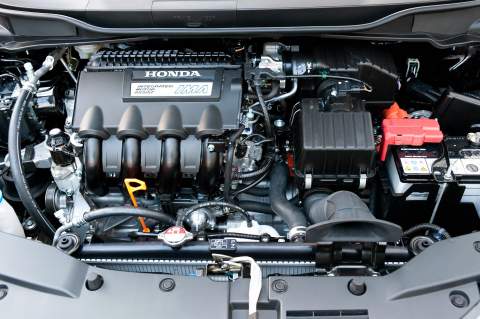 Logical under-bonnet layout
Logical under-bonnet layout 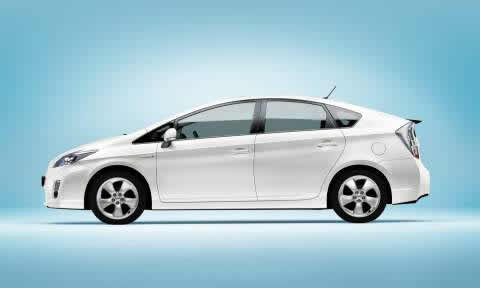 Well-balanced profile conceals spacious interior
Well-balanced profile conceals spacious interior 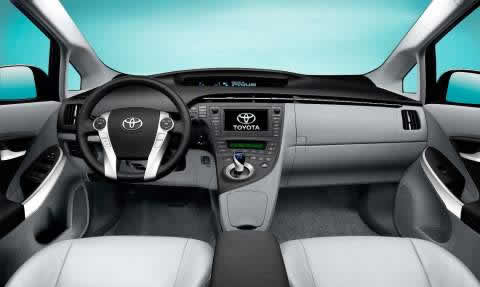 Uncomplicated but purposeful styling
Uncomplicated but purposeful styling 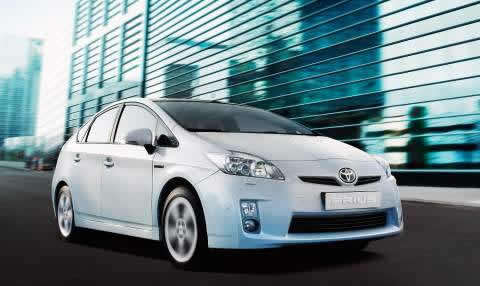 Low-rent but resilient plastics clad interior
Low-rent but resilient plastics clad interior 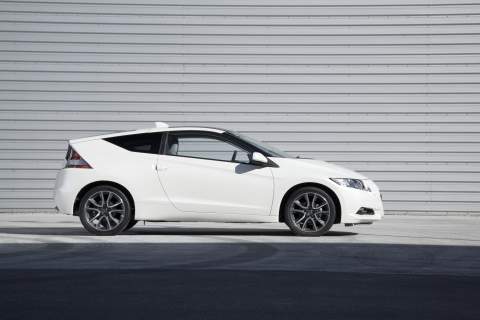 Crisp and sporty styling stance
Crisp and sporty styling stance 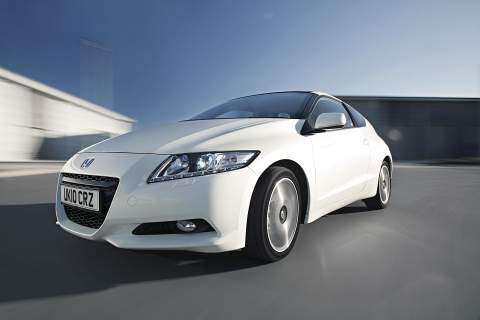 Refined dynamics raised hybrid expectations
Refined dynamics raised hybrid expectations 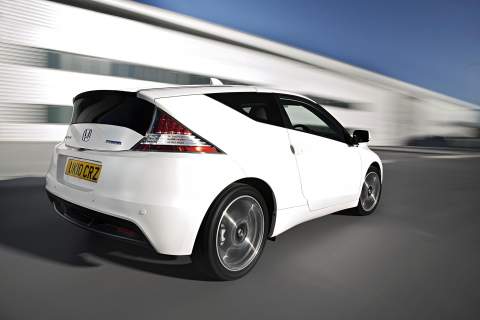 Fabulous fun to drive
Fabulous fun to drive 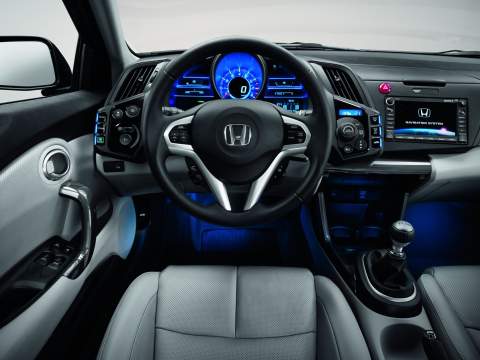 Cheery and well-detailed interior
Cheery and well-detailed interior 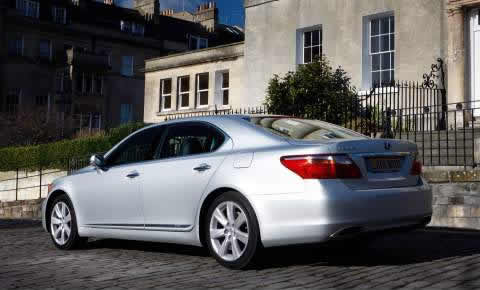 Super-luxury is available in hybrid form
Super-luxury is available in hybrid form 
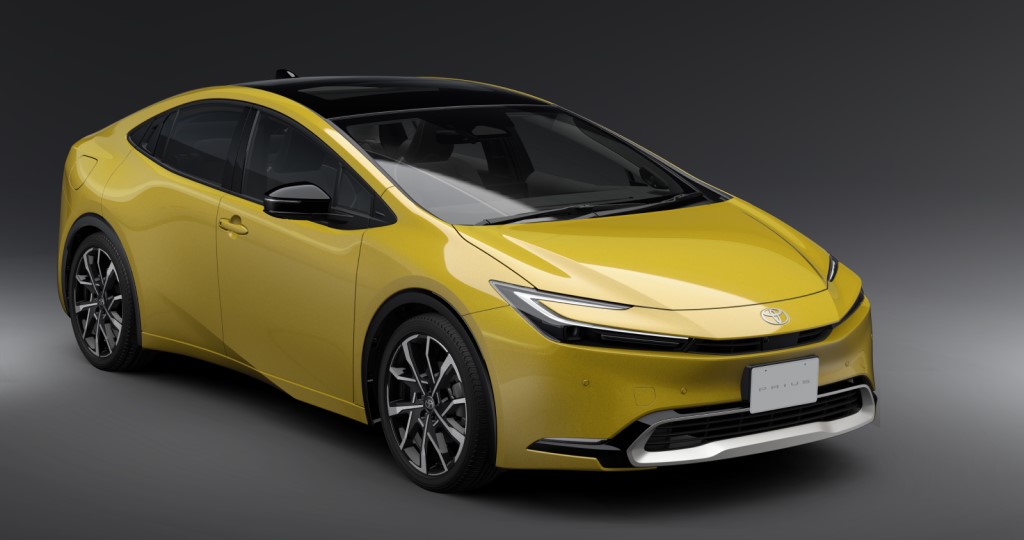
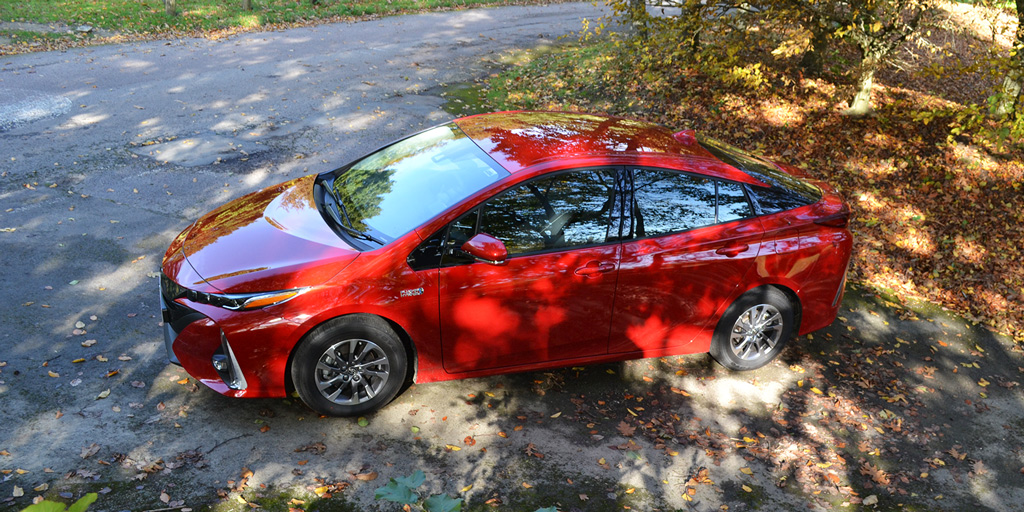
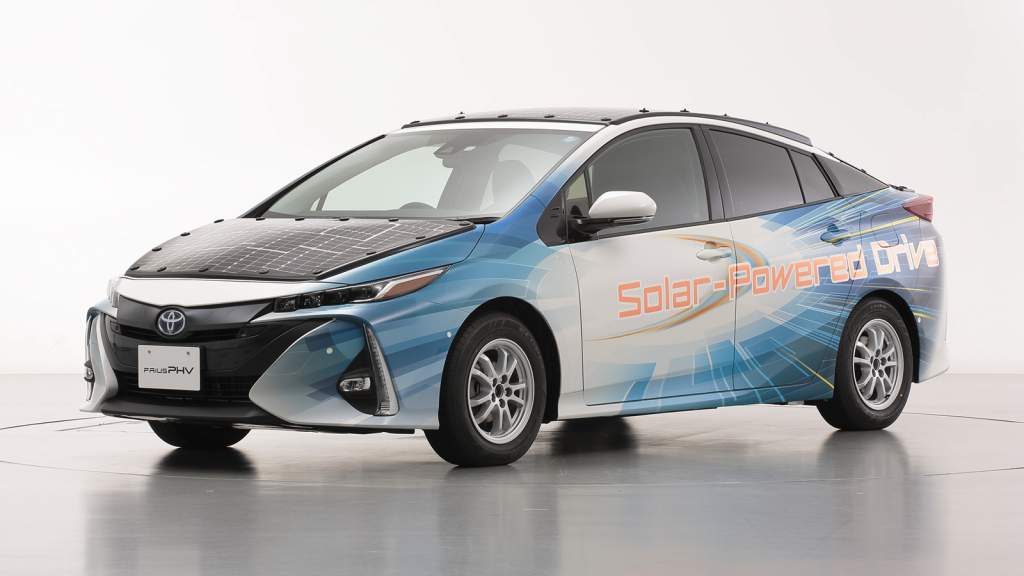
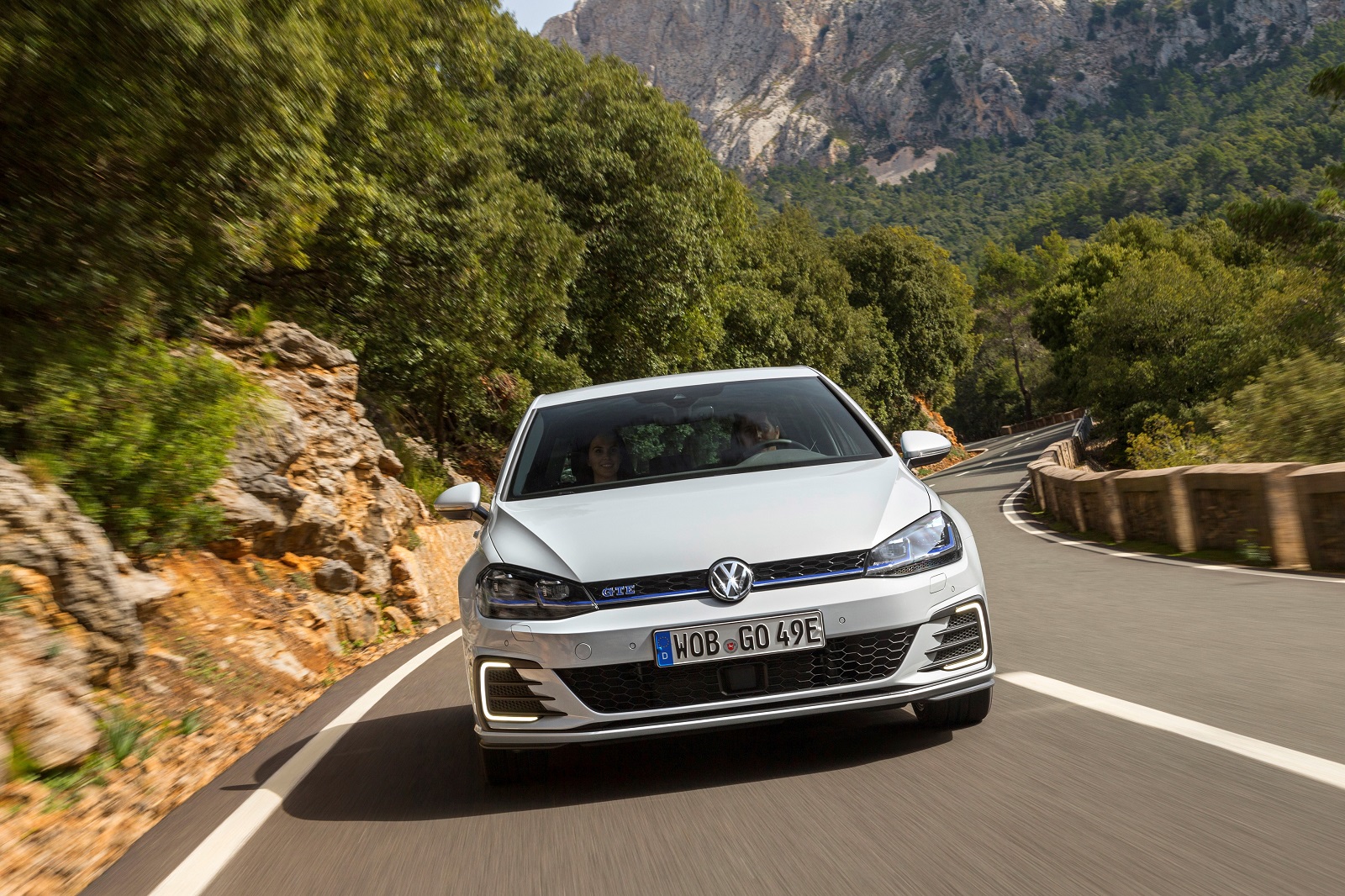
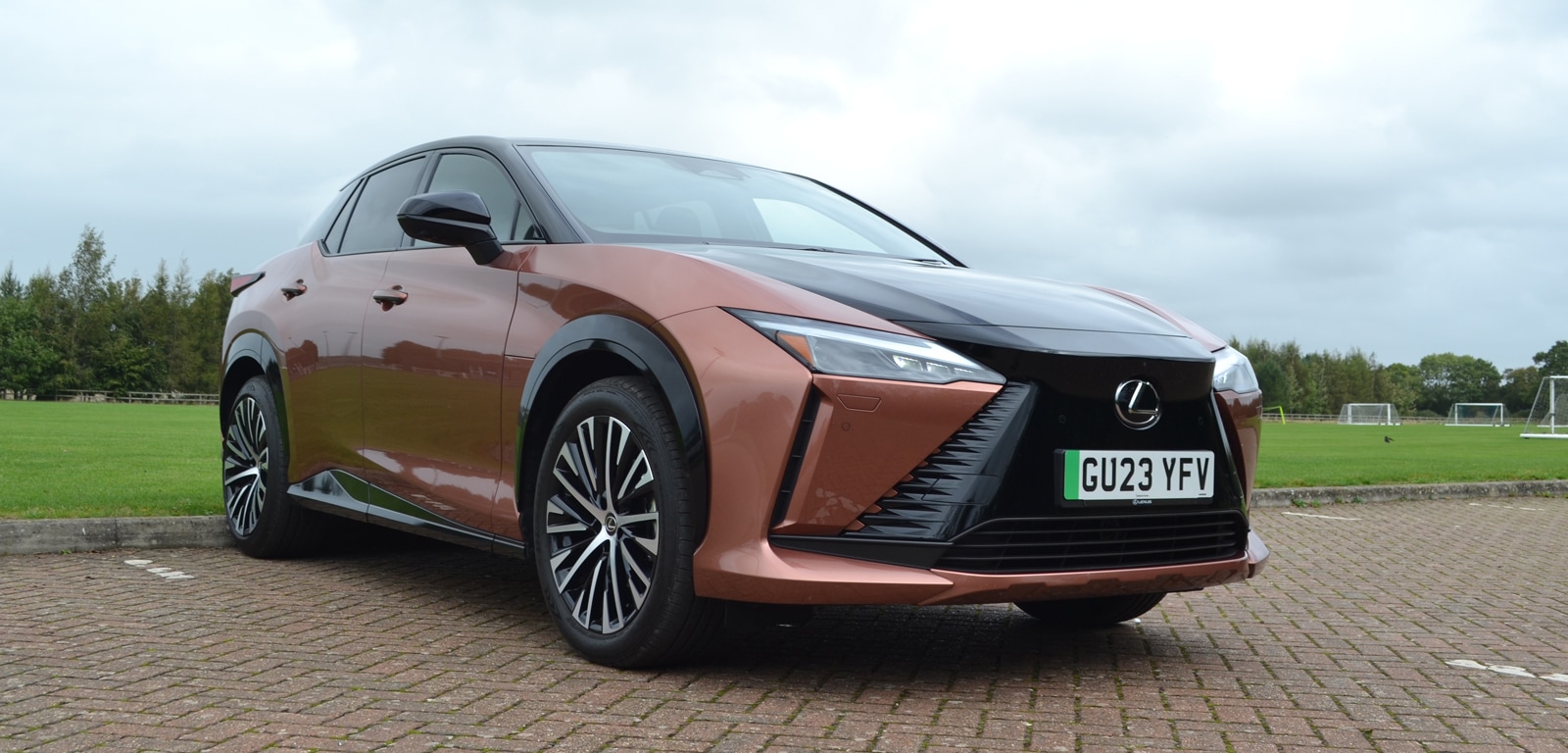


Comments (0)
Be the first to write a comment
Login/ Signup